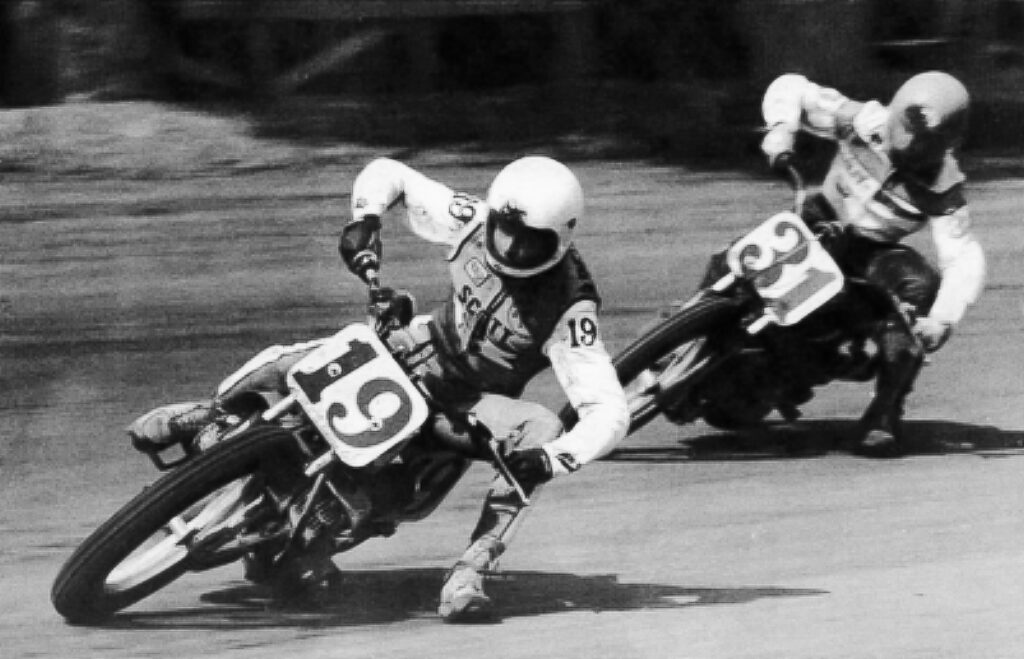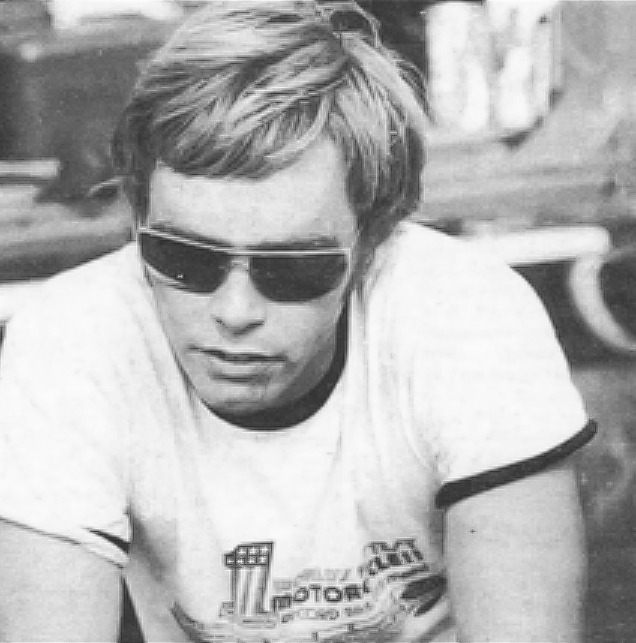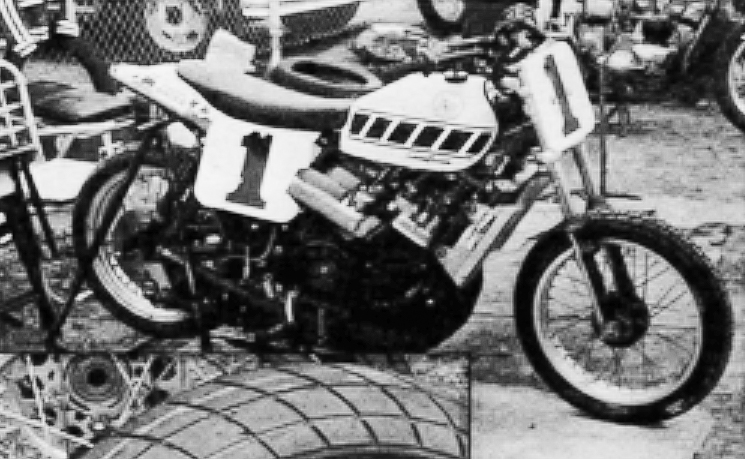Cycle News Archives
COLUMN
A new champ, a brief but spectacular threat from two-stroke motorcycles and a win for a crowd favorite from Milford, Michigan, named Rex.

By Kent Taylor
There may have never been a more fascinating time for Class C racing than the 1975 season. At that time, the AMA’s Grand National Championship was still the most coveted of motorcycling’s crowns. Even though attrition of various sorts had eliminated several brands and made it a race between two manufacturers, Harley-Davidson and Yamaha, both companies were still willing to break the bank to get that number-one plate.
That digit belonged to Yamaha, specifically Kenny Roberts. “King Kenny” had proven himself to be a threat at each of the disciplines that made up the chase for number one, and he had come out on top of the points battle in both 1973 and 1974. His closest competitor, Gary Scott, had finished second each year, and in 1975, Scott’s employer, Harley-Davidson, led by team manager Dick O’Brien, was determined to regain that top spot in AMA racing.
The championship would be determined in late September at the running of the San Jose Mile, and even though it was a two-man war, the battle that night was intriguing in so many other ways. To be sure, there was Gary Scott, with a battalion of orange-and-black teammates. And there was Roberts, astride his new TZ 750 dirt track racer that had stunned the dirt track world earlier that season at the Indianapolis Mile. Roberts versus Scott would have been worth the price of admission. As Grand Funk Railroad opined that year, this rivalry alone was “some kind of wonderful!”
But fans on hand that night would witness more “clean out of sight” racing drama. The two-stroke racers were now a force to be reckoned with; in addition to Roberts’ TZ, both Scott Brelsford and Don Castro were mounted on Kawasaki 750 triples that were tuned by superstar mechanic Erv Kanemoto. On traditional four-strokes were Harley riders Corky Keener, Mert Lawwill and Rex Beauchamp, along with number 65x, a rookie named Jay Springsteen. All were pre-race favorites, on a race track which, by the way, cared not a whiskered plug for any pre-race favorite.
The first heat began with fast qualifier Beauchamp on pole, a combination which usually meant that every other rider was going to be fighting for second. If a racer took exception to that rule, they did so at their own peril. “I look at one spot in the first corner and the starter at the same time,” he had once stated in a Cycle News interview, “[and] I’m going to that spot unless somebody knocks me down before I get there. If somebody gets in the way, I still head for that spot!”
Like other great dirt trackers before and after him, Beauchamp hailed from the state of Michigan, and he had taken a steady ride to secure his place among the elite. Under the guiding hand of O’Brien, Beauchamp had become one of the top flat trackers in America. He believed that he could be number one, despite his disdain for road racing, which, according to Cycle News, was something he found boring.
Beauchamp was both fast and confident. “Kenny Roberts,” he said, “is by far the best rider I’ve ever seen.”
Is Roberts, the two-time champ unbeatable?
“I can beat anyone on dirt,” Beauchamp said matter-of-factly.
Not in this heat, however, as it would be Brelsford on Kanemoto’s Kawasaki powering to the win, with Rex second, Hank Scott third and Rick Hocking, on another TZ 750 taking the last direct transfer to the main. Beauchamp was saving his best for when it counted.
Heat number two saw two more two-strokes making their way into the main, with Roberts on top and Randy Cleek on his own TZ 750 in fourth, right behind Steve Morehead and Corky Keener. In heat number three, Jay Springsteen took the win. Don Castro put his Kawasaki into the main with a fourth place and Skip Aksland won the first semi on another Yamaha TZ, making it a total of six two-strokes in the main. A concept that had been unfathomable just months before was now a reality. It would be one that the AMA could not (and would not) accept.
The final heat was won by Mert Lawwill, with Lane Campbell noting that Diane Cox, the AMA’s first female Class C Expert, was gaining on a final transfer spot before suffering mechanical woes with her Triumph.
Four-strokes and two-strokes, America vs. Japan vs. England (John Gennai and his Triumph also made the main), and a championship on the line. Famed starter “Bouncin’” Bob O’Malley waved them off and the racing was underway in the main event. It would be Lawwill and Gary Scott battling for the lead early on. Beauchamp, Springsteen, Keener and Hank Scott would join the scrum, all but Scott having a moment of glory, each getting to lead a lap at San Jose.
San Jose always promises close finishes, and it kept its word this night, with Springsteen leading into the white flag lap. Beauchamp, playing chess, kept his Harley oh-so-close, just where he needed to be to draft Springer, slipping past him at the checkers for the win.
“Beautiful,” Beauchamp said in celebration. Just “beautiful!”

Where were the two-strokes? On the bench. It was as if their heat race success was little more than a flirty wink from a pretty girl; when the dance began, the meaty four-strokes took over. Roberts had faded (and would eventually DNF). Castro, Hocking and Aksland were mid-pack. Only Brelsford could crack the top 10, finishing just ahead of 10th-place man Gene Romero. Gary Scott’s fifth place was enough to earn him his first Grand National Championship, with teammate Corky Keener taking the number-one plate to Scott as they celebrated the new champ in the winner’s circle.

It would be Scott’s only championship and one of his last rides as an official member of the Harley-Davidson squad. The champagne spray had barely dried when Scott and H-D announced a divorce, with Scott vowing to defend his title as a privateer in 1976. 1975 would also be the final season for multi-cylinder two-strokes in AMA dirt track competition. New rules were laid down before the smoke had cleared, and the TZ 750s and Kawasaki triples were mothballed, to the delight of some and consternation of others, like Scott Brelsford, who believed that he and the two-stroke racers were being treated unfairly.
A new champ, a brief but spectacular threat from two-stroke motorcycles and a win for a crowd favorite from Milford, Michigan, named Rex. All who witnessed would likely agree—it was indeed some kind of wonderful.CN
Click here to read the Archives Column in the Cycle News Digital Edition Magazine.
Subscribe to nearly 50 years of Cycle News Archive issues
Click here for all the latest Flat Track racing news.
